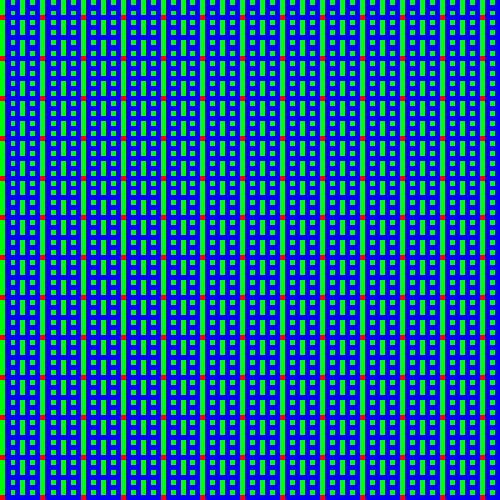Monsky’s Theorem states that it is impossible to dissect a square into an odd number of triangles of equal area.
While the statement sounds easy, the proof is actually far from trivial but is counted towards the most beautiful proofs in mathematics. The wikipedia article has some short outline, the full proof is for example given in proofs from the book. It is based on a coloring of the plane generated by a “non-Archimedean valuation” \(v(x)\).
To define \(v(x)\), we first note that for any prime \(p\), any non-zero rational number \(r\) can be written as
\[r = \frac a{\lvert r\rvert_p b}\]with \(a,b\) natural numbers prime to \(p\) (i.e. we have \(\lvert r\rvert_p = p^{-k}\) with some \(k\in\mathbb Z\)). \(\lvert r\rvert_p\) is called the p-adic value of \(r\). We define \(v(r) = \lvert r\rvert_2\) for any rational \(r\neq 0\), set \(v(0) = 0\) and continue \(v\) to all real numbers.
The coloring is then defined as
\[\text{Color of}\ (x,y) = \begin{cases} \text{blue} & \text{if}\ v(x)\geq v(y),\ v(x)\geq v(1)\\ \text{green} & \text{if}\ v(x)< v(y),\ v(y)\geq v(1)\\ \text{red} & \text{if}\ v(x)< v(1),\ v(y)\geq v(1) \end{cases}\]Below script generates this coloring on a grid on the plane.
Running the script creates pictures like the following:

One of the striking properties of this coloring is, that any line runs only through points of at most two different colors!